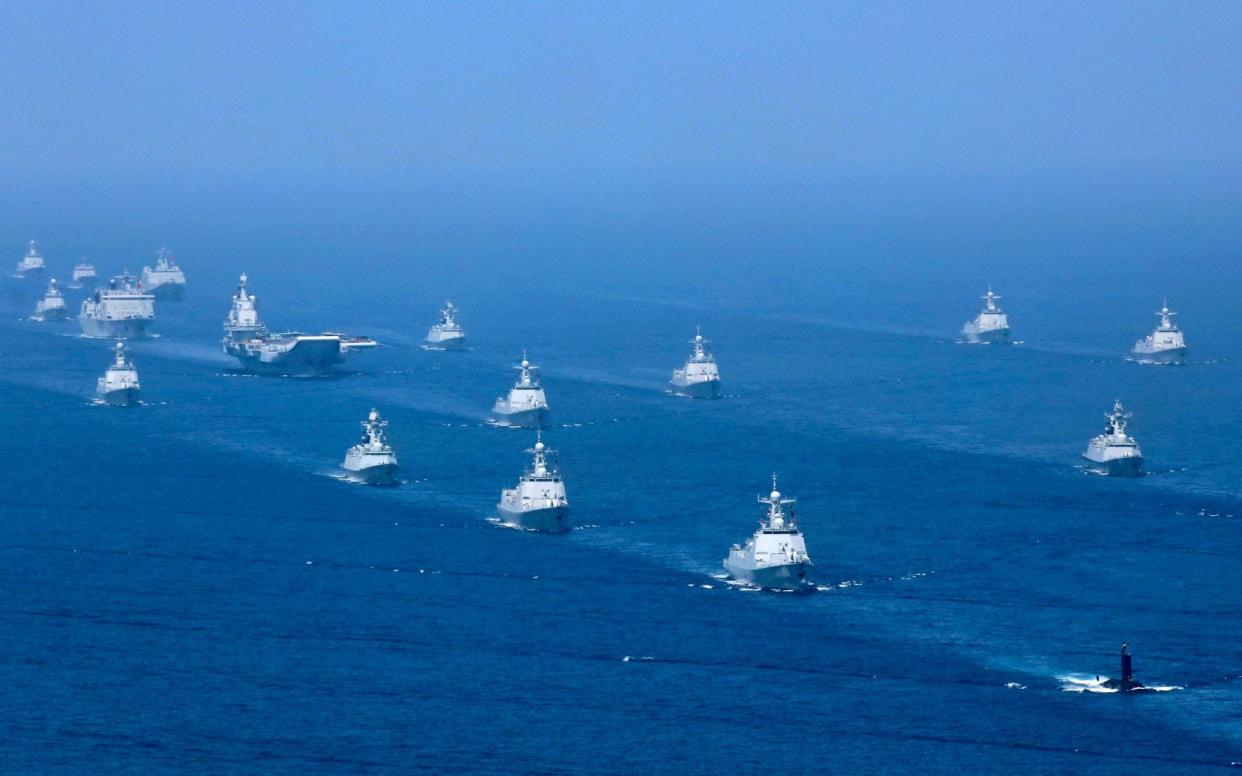There is a new Cold War in the Pacific, however much diplomats try to deny it

For decades, the focus of security studies in the Western pacific has been the Taiwan strait.
If China invades Taiwan, the question goes, would the United States come to the island's defence? And if so, would Britain be drawn into World War Three alongside its ally?
It is an important question, and it was the one Theresa May asked when Boris Johnson announced a new security alliance with the US and Australia designed to contain China.
But it also rather misses the point.
For the true driver of the AUKUS arrangement is an ocean-wide confrontation far more complex than the decades-old tensions between mainland China and its break-away island province.
From Tokyo to Canberra, via Hanoi and Port Moresby, countries are being forced to take sides in what diplomats still do not want to call a Cold War.
For years, Canberra tried to balance its strategic alliance with the United States with its blossoming trade partnership with China. Successive Australian governments shrugged off suggestions they must make a choice between one or the other.
Recent trade disputes, which the Australian government says amount to "economic coercion", have made that stance difficult to maintain.
Scott Morrison, the prime minister, publicly came off the fence in June when he warned fellow Western leaders at the G7 summit in Cornwall of “growing instability in the Indo-Pacific that in turn is threatening broader global stability.”

With the decision to buy nuclear submarines, his government has firmly nailed the Southern Cross to the American mast.
Australian officials still insist they are continuing to balance the two relationships, pointing to strong economic common interests with China that have survived recent quarrels. But such ambiguities cannot disguise the contest unfolding across the Western Pacific.
Besides Taiwan, China's expanded navy is engaged in increasingly acrimonious disputes with the Philippines, Vietnam, and Japan over a number of reef, shoals and uninhabited islands in the South and East China Sea.
To allow it to move freely against any of those potential rivals - or, as Beijing sees it, to defend its maritime security and sovereignty - it has undertaken the fastest navy ship building program of modern times, launching its first aircraft carriers and nuclear powered submarines.
It has also invested in long-range, hyper-sonic weapons specifically to defeat the carrier strike groups that form the backbone of American naval power.
The new Australian submarine fleet is hardly going to thwart an invasion of Taiwan or the Spratly islands. But they do have a greater range and can remain submerged for greater periods of time than their diesel electric alternatives - making them perfectly suited to the reconnaissance and below-the-radar manouvering of Cold War style conflicts.
But there has been no comparable build up of military tensions in the Western Pacific since American, British and Australian warships battled the Imperial Japanese Navy for control nearly eighty years ago.
Then as now, the contest for the Pacific centres on control of tiny but strategic islands separated by thousands of miles of open sea, and the use the latest technology - aircraft carriers and submarines - to strike enemies beyond the horizon.
Governments on all sides will be hoping this maritime Cold War never turns hot.
But that is the fight they are readying for.
China's navy fleet surpasses that of the US - but is it ready?
by Sophia Yan in Beijing
China is all about big numbers – world’s most populous; world’s second-largest economy.
Same goes for its armed forces – world’s largest military with two million troops, and within that, the world’s largest navy with 350 ships in its fleet, a figure US naval intelligence estimates will grow 20 per cent over the next decade.
For comparison: The US has 1.4 million troops and 297 ships, and the UK has 193,000 soldiers and 79 naval vessels.
Chinese leader Xi Jinping ordered a major investment in shipbuilding and technology in 2015 to catch up with the US. As the world's largest commercial ship builder, state-owned firms are quickly able to transition to help the naval-build-up.
Beijing has so far focused more on smaller vessels that can be easily deployed close to China's shore, and can navigate shallow waters like the islands it claims in the contested South China Sea. This leaves the country behind the US when measuring total tonnage, range and firepower.
Plans are under way, however, to improve China's 'far sea protection', including aircraft carriers, guided-missile cruisers and nuclear submarines. One planned Chinese carrier will have a nuclear reactor and electromagnetic catapults to increase the range of the ship and its aircraft.
But to only get caught up in the numbers means missing a crucial point: China’s armed forces lack combat experience.
Chinese troops have had a few small kerfuffles here and there, but they’ve never really been tested in the field.

Defence experts have called this the “million-dollar question” – how the People’s Liberation Army would actually perform under pressure, if push came to shove.
Mr Xi, also the chairman of the central military commission, likely knows this is of concern, issuing frequent calls for soldiers to be “combat ready.”
That’s not to say that China’s rapid military modernisation isn’t of concern – especially naval in the Indo-Pacific region – as having greater capabilities has already shifted the power dynamics in the region.
Unsurprisingly, China doesn’t reveal its plans for fleet size, or its ultimate designs for military expansion.
But to a certain extent – particularly to China’s smaller regional neighbours in Asia – it’s perhaps less about what would happen if Beijing were to deploy a warship or fire off a nuclear missile and whether it would hit targets, but rather, that it has the ability to do so.

 Yahoo News
Yahoo News 
